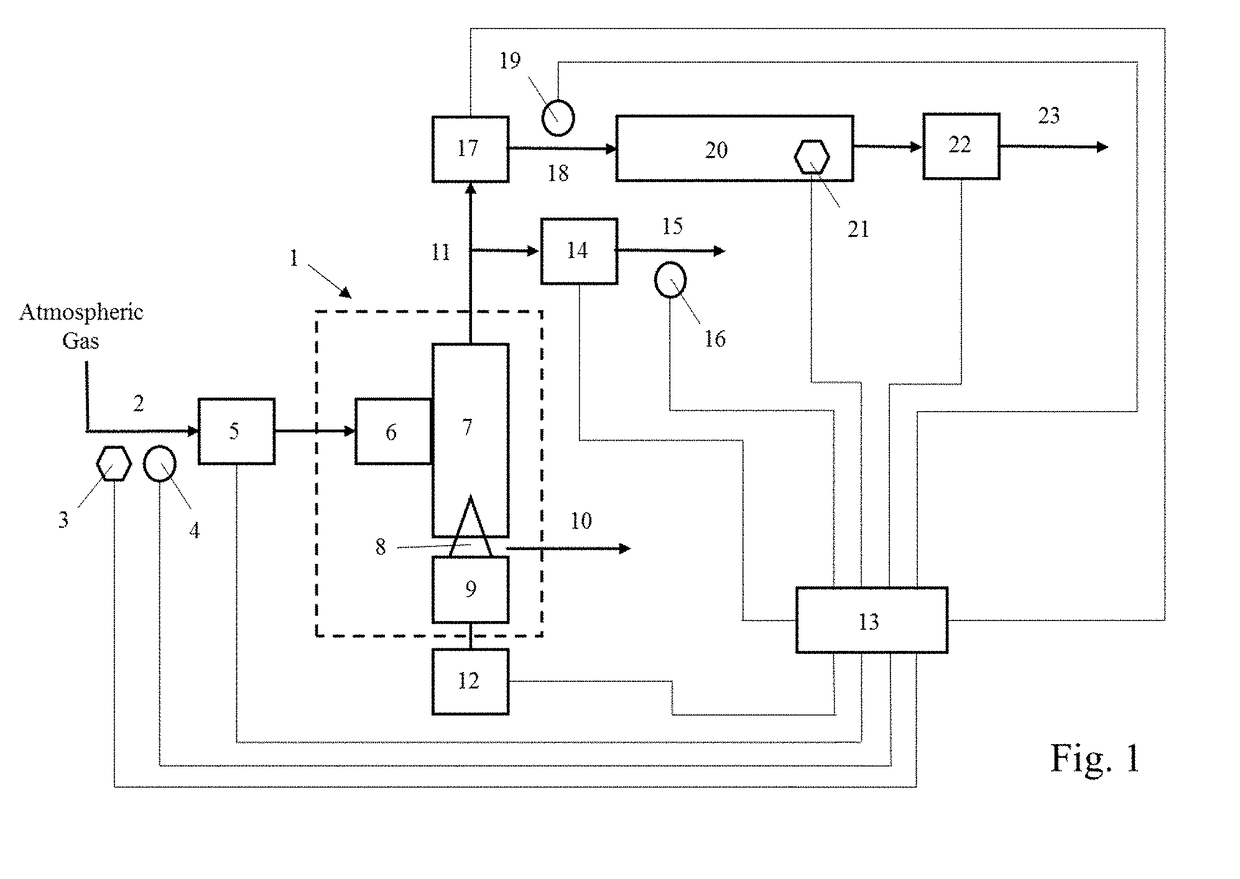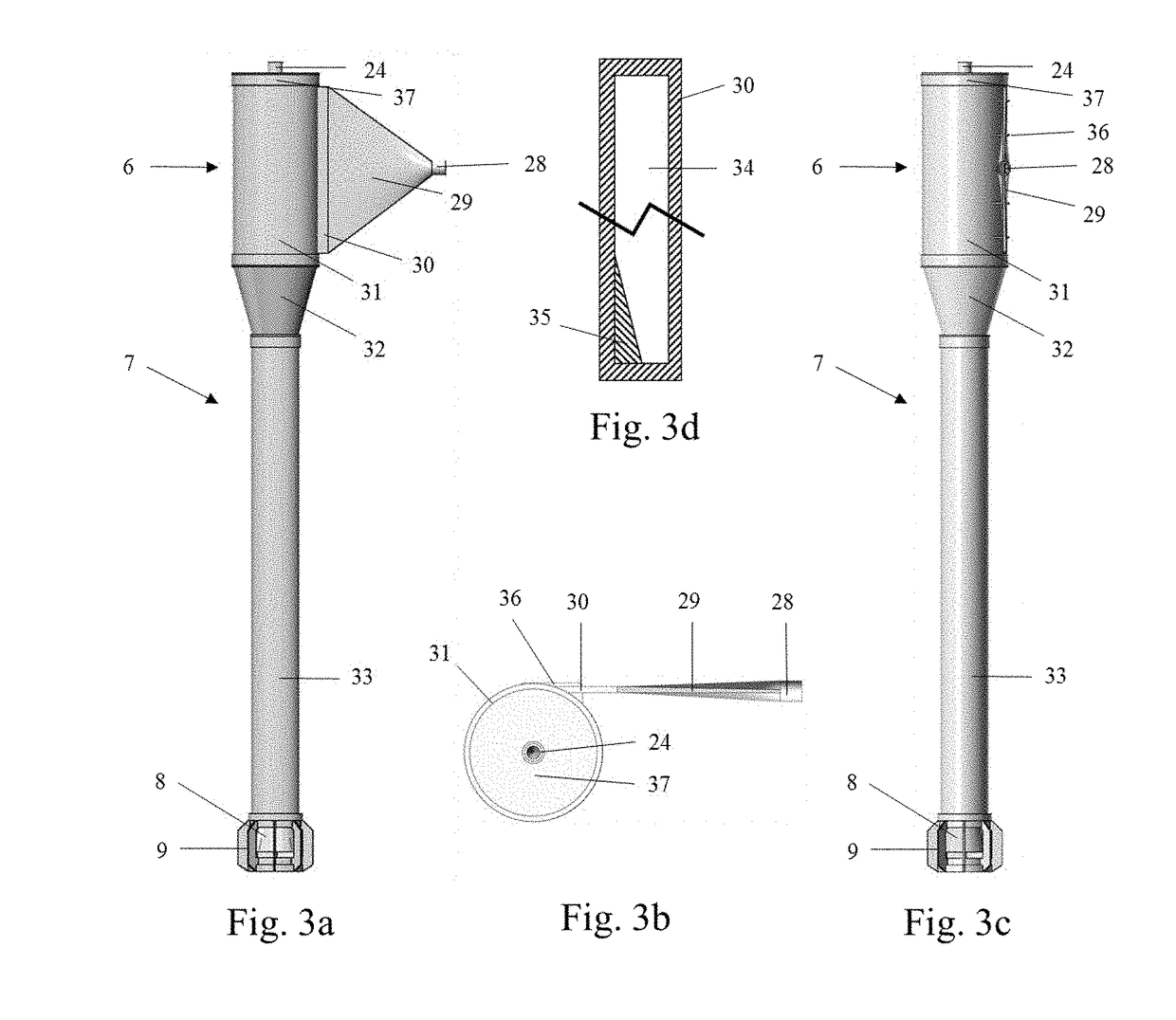Process and apparatus to remove carbon-14 from carbon-dioxide in atmospheric gases and agricultural products grown in controlled environments
a technology of atmospheric gases and agricultural products, applied in the direction of vortex flow apparatus, separation process, nuclear elements, etc., can solve the problems of most challenging centrifugal separation applications, and uneconomical filtration of atmospheric gases on a large-scale for agricultural production. , to achieve the effect of reducing cumulative genetic damage, reducing harmful damage to human dna, and reducing energy consumption
- Summary
- Abstract
- Description
- Claims
- Application Information
AI Technical Summary
Benefits of technology
Problems solved by technology
Method used
Image
Examples
Embodiment Construction
[0039]FIG. 1. is a flow diagram for the separation of atmospheric gases to remove CO2 with 14C in accordance with the process, control system, and Helikon Vortex Bilateral and Unilateral Compression designs within the invention. The Helikon Vortex 1 (see FIG. 2 or FIG. 3 for details) constitutes a means to remove CO2 with 14C from the atmospheric gases 2. Several alternative processes or apparatus could substitute 1 in this flow diagram, with respective losses of efficiency as described in the background section, and constitute an alternative means to remove CO2 with 14C from 2. The atmospheric pressure p1 of the atmospheric gases 2 is measured by pressure sensor 3 and CO2 abundance c1 in the atmospheric gases 2 is measured by CO2 sensor 4, both of which are monitored by a control system 13. A commercial high-speed air blower 5, which can be activated by the control system 13, accelerates the atmospheric gases to velocity v and volume V0 per second which is output directly into an a...
PUM
 Login to View More
Login to View More Abstract
Description
Claims
Application Information
 Login to View More
Login to View More - R&D
- Intellectual Property
- Life Sciences
- Materials
- Tech Scout
- Unparalleled Data Quality
- Higher Quality Content
- 60% Fewer Hallucinations
Browse by: Latest US Patents, China's latest patents, Technical Efficacy Thesaurus, Application Domain, Technology Topic, Popular Technical Reports.
© 2025 PatSnap. All rights reserved.Legal|Privacy policy|Modern Slavery Act Transparency Statement|Sitemap|About US| Contact US: help@patsnap.com



